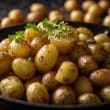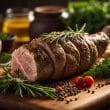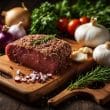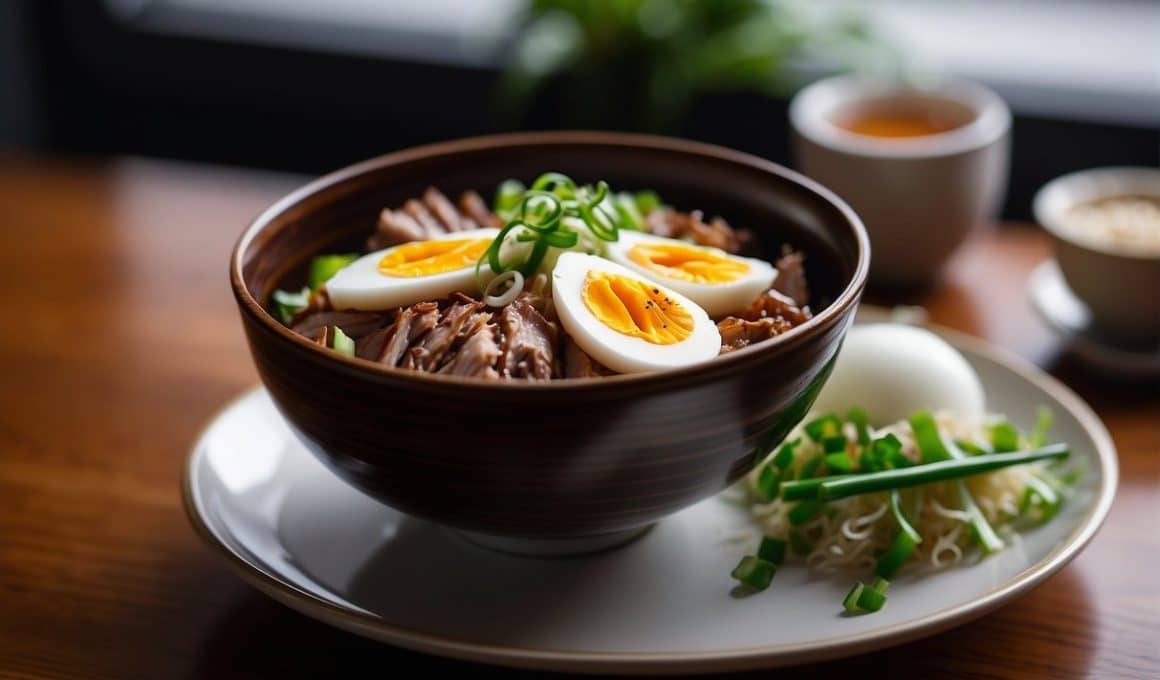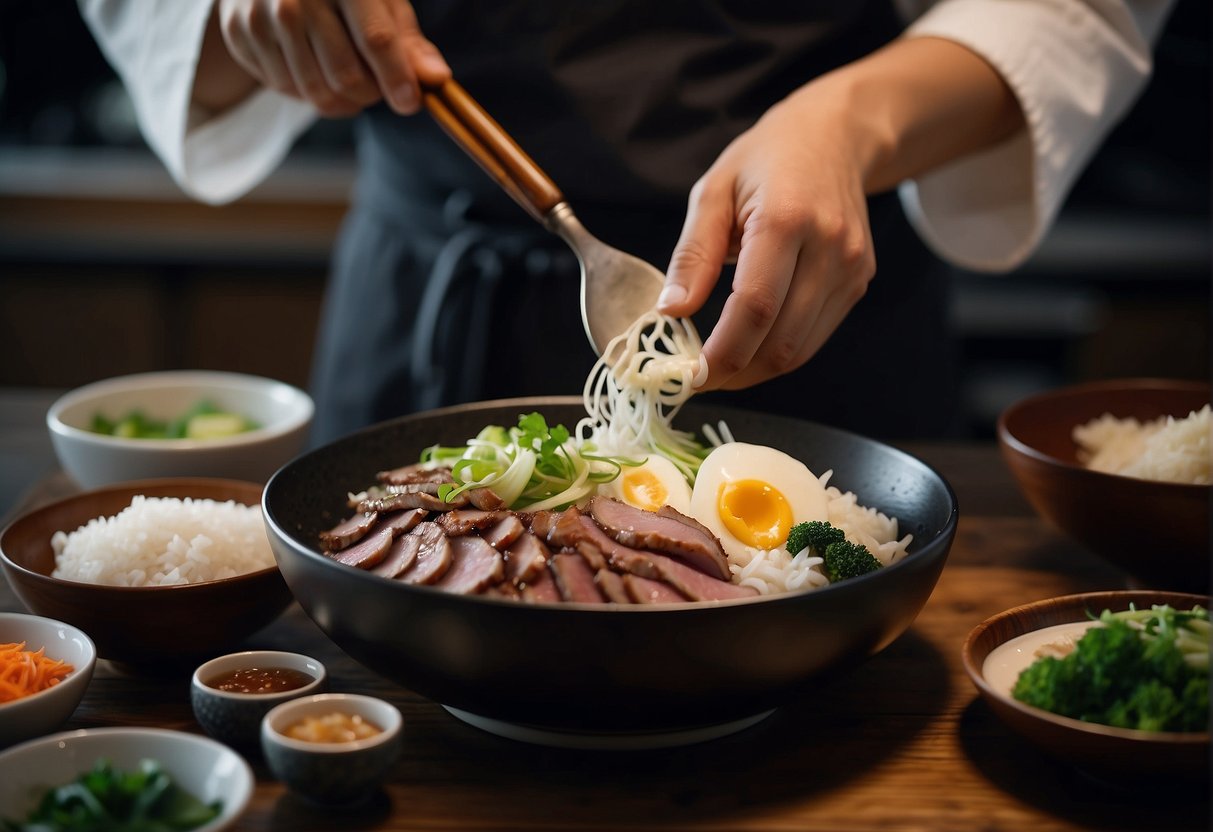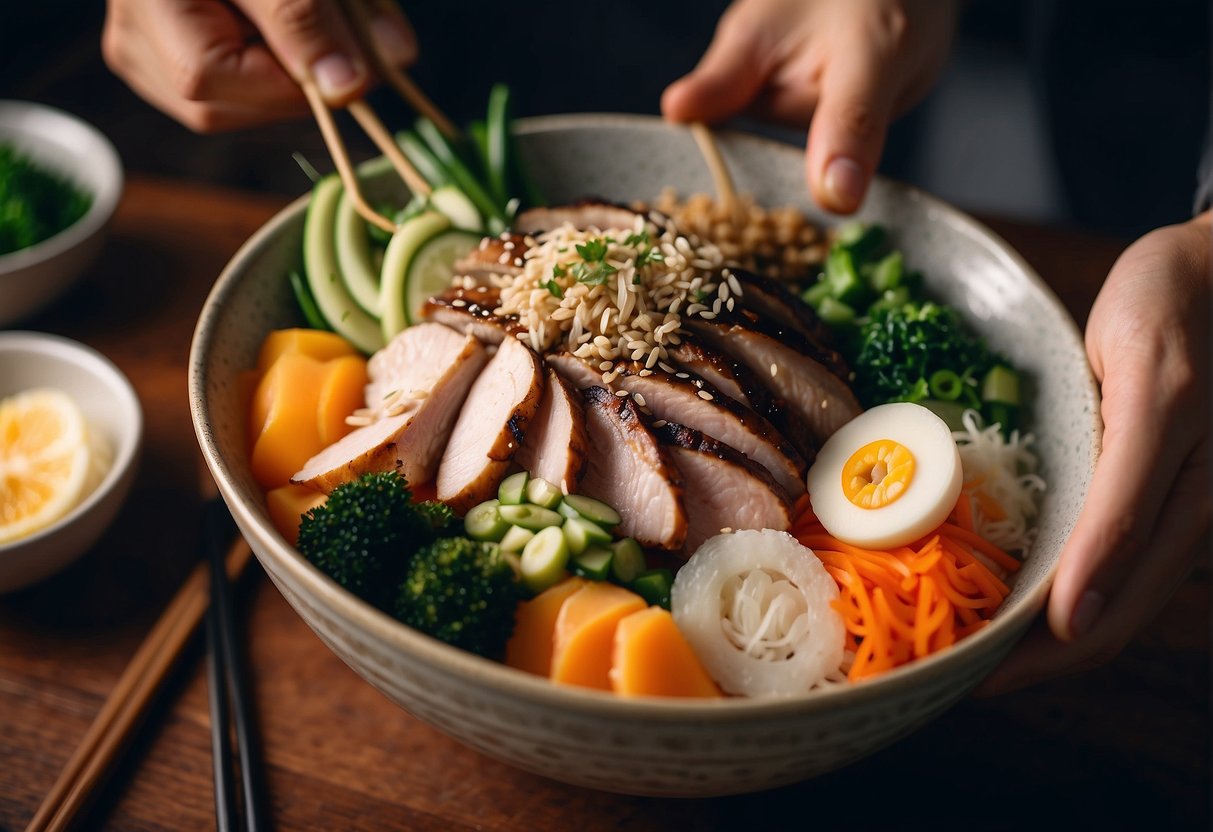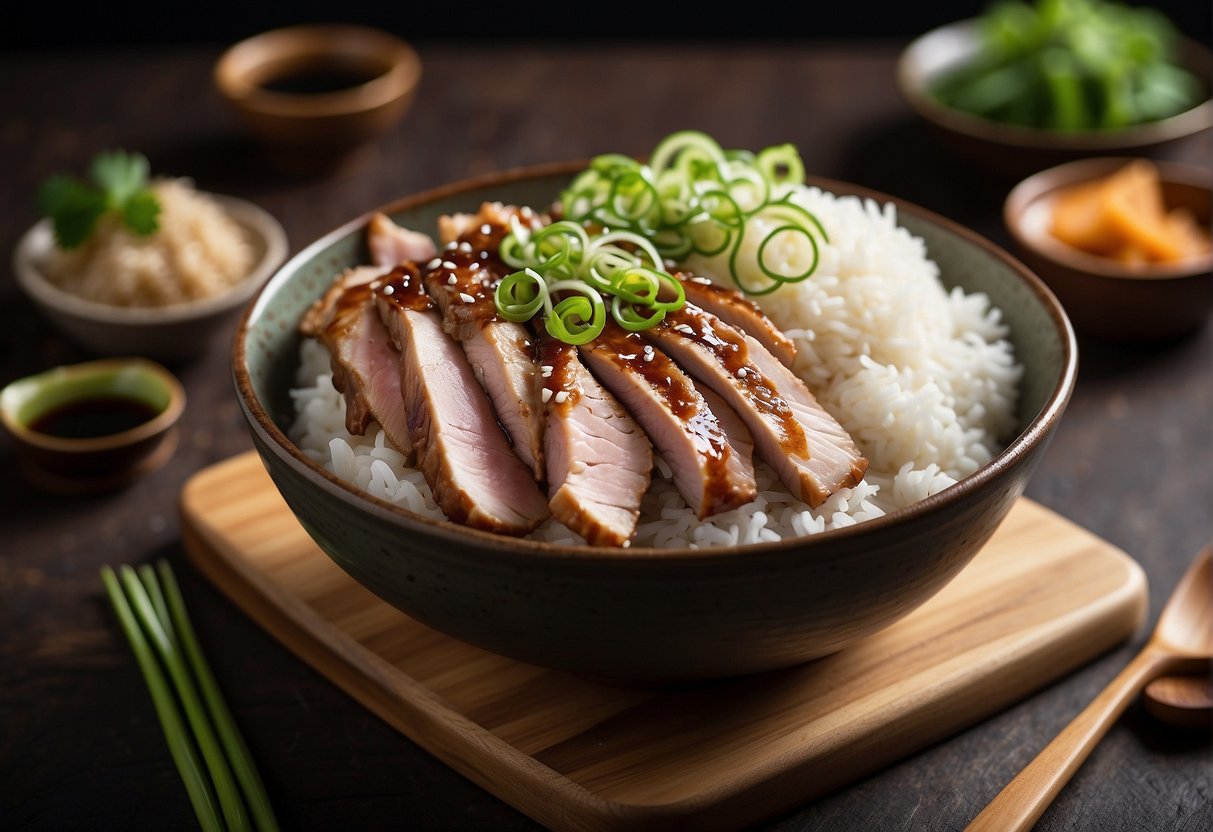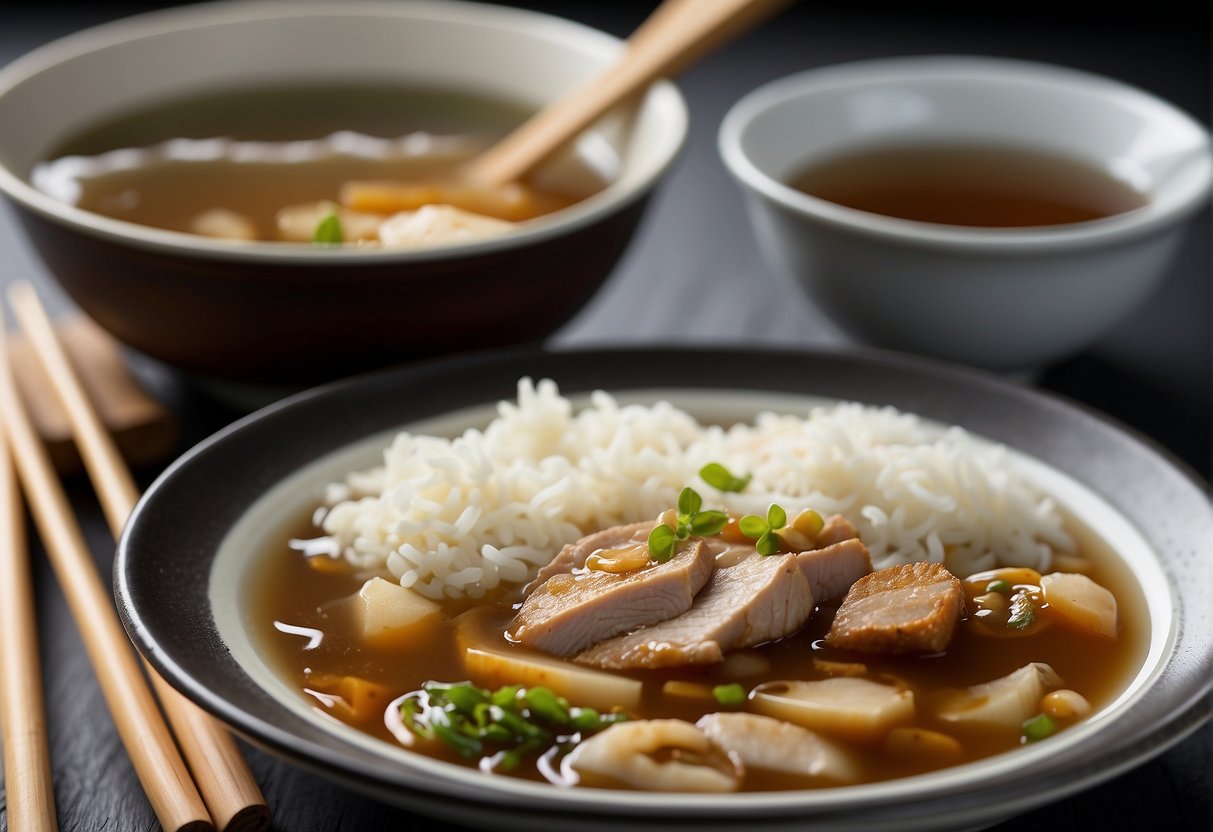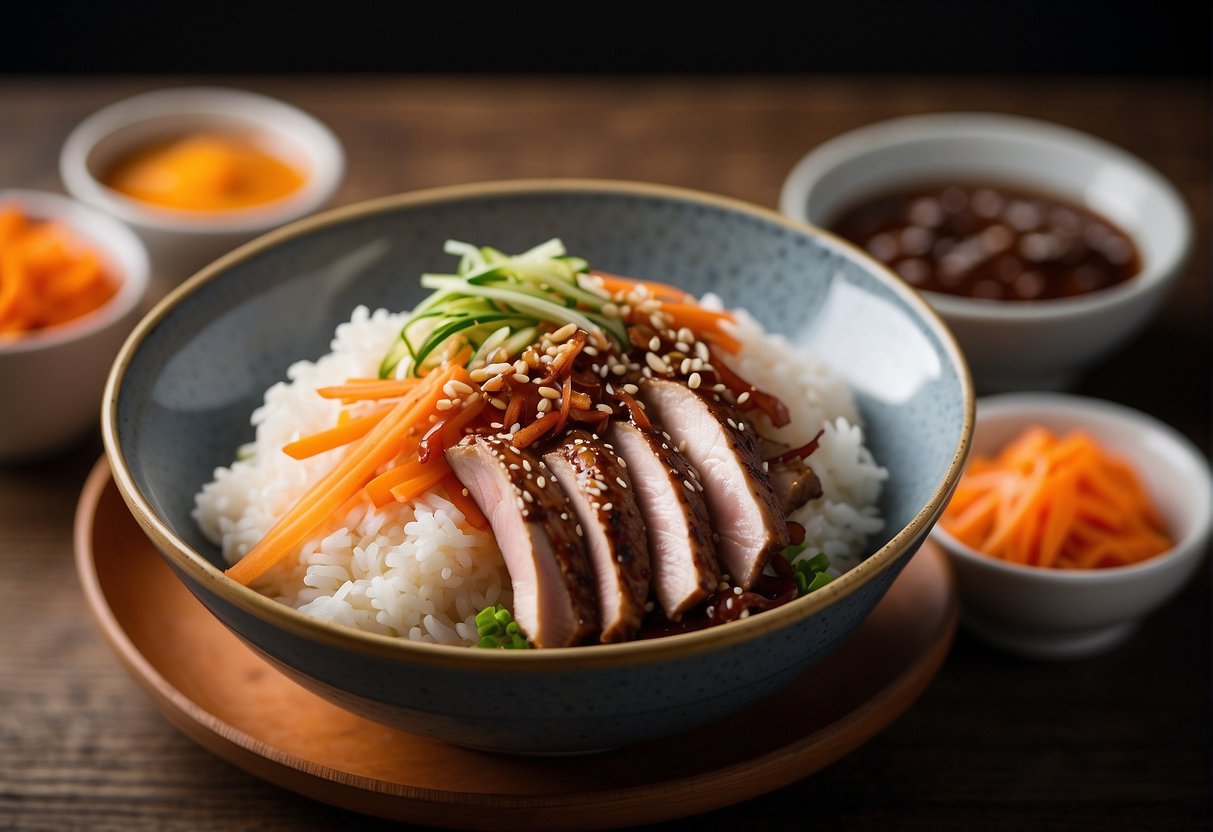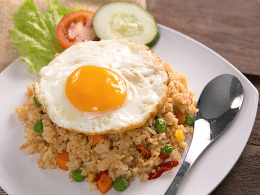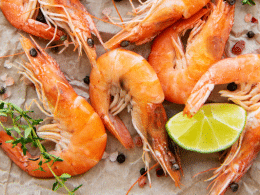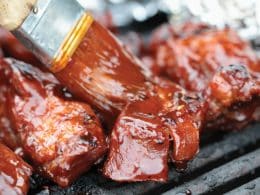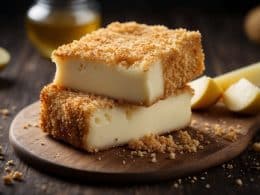Duck donburi is a Japanese-inspired dish that balances simplicity with rich, savory flavors, incorporating slow-cooked or pan-fried duck with seasoned rice and a variety of toppings. Often served in a bowl, this meal traditionally brings together a harmony of ingredients like vegetables, egg, and a glaze of teriyaki or another sauce – each playing a role in creating a satisfying, one-bowl wonder. The versatility of this dish allows for personal touches, inviting you to play with different components to suit your palate, whether it’s adjusting the sweetness of the sauce or the type of vegetables used.
The preparation of duck donburi involves a careful selection of key ingredients and attention to cooking techniques to ensure a balance of textures and flavors. Cooking the duck to perfection and achieving the glossy coating of teriyaki sauce is a craft in itself – but one that can be mastered at home with the right guidance. While the dish might look complex, it breaks down into manageable steps: seasoning and cooking the duck, preparing the rice, and assembling the bowl with a variety of toppings and garnishes for a presentation that’s as appealing to the eyes as it is to the taste buds.
Key Takeaways
- Duck donburi is a harmonious dish combining duck, rice, and a variety of toppings.
- It allows for customization while emphasizing balance in flavors and textures.
- The dish is characterized by its appealing presentation and rich, savory taste profile.
Understanding Donburi
Donburi, a quintessential Japanese dish, showcases a harmonious blend of rice, protein, and various toppings all served in a large bowl. It’s a versatile and satisfying meal with numerous variations, including the flavorful duck donburi.
History of Donburi in Japan
Donburi originated in Japan as a convenient meal that combined leftovers with rice in a single bowl. It quickly became a staple due to its simplicity, affordability, and the ease with which it could be customized. This practicality cemented donburi’s place in Japanese cuisine, evolving with local ingredients and preferences to suit the tastes of each region.
Essential Components of a Donburi Bowl
A traditional donburi bowl consists of three key elements:
- Rice: The foundation of the dish, usually short-grain white rice, provides a neutral background that absorbs the flavors of the toppings.
- Protein: It could range from fish and meat to tofu. The protein is often simmered in a savory sauce that permeates the rice with umami.
- Toppings: These can include a variety of vegetables, pickles, and sometimes a fried egg, to add texture and complementary flavors to the bowl.
Why Duck Donburi
Duck donburi has risen in popularity due to the rich taste of duck legs, which pairs excellently with the sweet and savory teriyaki sauce. The combination of tender, slow-cooked teriyaki duck with the rice makes for a satisfying meal that’s both indulgent and balanced. The dish is a testament to the adaptability of donburi, embracing diverse ingredients while staying true to the comforting essence of the traditional bowl.
Key Ingredients for Duck Donburi
Crafting the perfect Duck Donburi hinges on selecting the finest ingredients. Each component from the duck to the rice and vegetables must be chosen with care to create a harmonious dish.
Choosing the Right Duck
The star of Duck Donburi is undoubtedly the duck. I recommend using duck legs for their rich flavor and tender meat, which enhances the overall dish. When shopping, I look for duck that appears moist with a firm texture, ensuring it hasn’t been overly frozen or mishandled.
Selecting the Best Rice
The foundation of this Japanese rice bowl is, naturally, the rice. It’s crucial to use Japanese short-grain rice for its sticky and plump characteristics, which contrast pleasingly with the savory toppings. I always opt for rice that’s labeled as ‘sushi rice’ or ‘shinmai’, which denotes a new crop for extra freshness.
Vegetables and Accompaniments
Vegetables add crunch and color to Duck Donburi. My go-to veggies are spring onions, carrots, and cucumber, sliced thinly for texture. Additionally, traditional accompaniments like pickles and furikake seasoning can elevate the dish. The sheer simplicity of the greens alongside the rich duck makes the meal not only vibrant but also balanced.
Preparation and Cooking Instructions
In preparing and cooking duck donburi, I focus on two key components: the duck, with its rich flavor needing careful prep, and the rice, which serves as the foundation of the dish. Both elements require attention to detail to ensure a perfect donburi.
Prepping the Duck
Firstly, I preheat my oven to a specific temperature, which is usually around 350°F (175°C), ideal for cooking duck legs. Before they go into the oven, I score the duck skin and season the legs with a blend of soy sauce, mirin, honey, and freshly chopped chili for a flavorful teriyaki marinade. This process should take about ten minutes of prep time. The marinade not only adds depth of flavor but also helps to tenderize the meat. I arrange the duck legs in a baking dish and let them roast until they are beautifully browned and tender, which typically takes about 90 minutes.
Cooking the Rice Perfectly
When it comes to the rice, the goal is to achieve a fluffy and well-cooked texture. I normally use 350 grams of rice, and the secret here is the water to rice ratio, which is crucial for perfect steamed rice. I rinse the rice under cold water until it runs clear to remove excess starch, which could make the rice gummy. Then I add the rice to a pot with a measured amount of water—usually a 1:1.2 ratio of rice to water. I bring it to a boil, then reduce the heat to a simmer and cover the pot, letting it cook for about 20 minutes. Once done, I let it sit, covered, for another 10 minutes to steam, ensuring each grain is separate and not mushy.
This section’s primary focus has been on prepping and roasting the duck legs to bring out their depth of flavor and achieving perfectly steamed rice, which together create the heart of duck donburi.
Assembling the Duck Donburi
When preparing Duck Donburi, the process is just as important as the ingredients. I’ll show you how to carefully layer your bowl for the perfect balance of flavors, followed by adding the right garnishes for an enhanced experience.
Layering the Bowl
First, I lay a generous amount of cooked rice at the base of the bowl – this acts as the canvas for my Duck Donburi. Rice is not just filler; it absorbs the savory teriyaki sauce that I drizzle over the top. Then, I place succulent duck legs that have been roasted to perfection onto the rice. It’s important for the duck to be both tender inside and crisp on the outside. The juices from the duck mingle with the rice, making every bite a flavorful one.
Garnishes and Toppings
For garnishes, each element plays a crucial role in creating a harmony of flavors. Spring onions are sprinkled for a sharp, fresh contrast, while sesame seeds add a subtle nuttiness and textural variety. A fried egg, with its rich, runny yolk, crowns the dish, adding a layer of comforting richness. If I’m feeling indulgent, slices of ripe avocado might find their way around the bowl for creaminess. These garnishes not only contribute flavors but also make the dish visually appealing with their vibrant colors.
Duck Donburi Variations
Duck Donburi, a dish that traditionally hails from Japan, is both versatile and accommodating to different dietary needs and flavor profiles. My experience with cooking and enjoying various Donburi bowls allows me to share some delightful variations.
Alternate Proteins and Vegetarian Options
For those who either prefer different proteins or follow a vegetarian diet, the choice of protein in a Donburi bowl is highly adaptable. Here are two options I find work extremely well:
- Chicken or Beef: If duck is not to your liking, chicken thighs or thinly sliced beef can be marinated in a mixture of soy sauce and mirin to capture the essence of the traditional taste.
- Tofu: A staple in Japanese cuisine, tofu can be a delicious vegetarian alternative. To infuse flavor, marinate firm tofu in teriyaki sauce before grilling or sautéing.
Consider adding a range of veggies like bok choy or edamame for a nutritious boost.
Incorporating Different Flavors
To cater to diverse palates, introducing distinct flavors into Duck Donburi can elevate the dish. Here’s how I like to play with taste:
- Spicy: A touch of heat can transform the dish. I often add chopped fresh chili or a teaspoon of chili flakes to the duck’s marinade.
- Sweet: A hint of sweetness complements the savoriness. Drizzle a bit of honey into the sauce, which pairs perfectly with the crispy duck.
Remember, a Donburi is not just about the protein. Rice, seasoned with rice vinegar, acts as a canvas for the flavors, and the garnishes, such as pickled radish or green onions, are integral to this staple dish. Adding these different elements allows you to enjoy the richness of Donburi with a personalized twist.
Cookware and Utensils
When preparing Duck Donburi, it is essential that you have the right equipment on hand to ensure precise cooking and ease of preparation.
Recommended Equipment
- Frying Pan: I use a non-stick frying pan for frying the duck to achieve a crispy skin without the meat sticking to the surface.
- Wok: For stir-frying the veggies that accompany the duck, a wok is ideal due to its high walls and even heat distribution.
- Oven: Some recipes require slow cooking the duck legs in an oven. I make sure mine is preheated to the exact temperature specified.
- Ovenproof Dish: For recipes calling for an oven-cooked duck, an ovenproof dish is necessary to hold the duck legs during cooking.
- Chopping Board: I use a sturdy chopping board to slice vegetables and carve the duck post-cooking. This ensures cleanliness and provides a stable cutting surface.
- Equipment: Additional equipment such as rice cookers can simplify the process for cooking the rice, while small bowls are great for holding prepped ingredients.
Choosing the right cookware and utensils is crucial to the success of a Duck Donburi dish. Each piece plays a specific role, and I find that using quality items leads to the best results.
Nutritional Information
When I examine the nutritional components of duck donburi, I pay close attention to the balance of macronutrients, which are critical for understanding the overall nutritional value of the dish.
Macronutrients in Duck Donburi
Duck donburi is a hearty and flavorful meal that provides a significant amount of macronutrients. To give you a clear breakdown, here’s a look at the typical macronutrient content in a serving of this dish:
- Calories: A typical order of duck donburi from Wagamama contains about 1,260 calories. The caloric content is important to consider if you’re monitoring your daily intake.
- Total Fat: You’re looking at approximately 55 grams of fat per serving, which is a mix of both saturated and unsaturated fats. It’s significant to note the 13 grams of saturated fat because it contributes to 65% of the recommended daily value.
- Cholesterol: Duck donburi dishes up around 270 milligrams of cholesterol, taking up about 90% of the daily value.
- Sodium: With approximately 2,050 milligrams of sodium, it’s high on the sodium scale, attributing to 89% of what’s recommended daily.
- Carbohydrates: The dish comprises roughly 149 grams of carbohydrates. Within these carbohydrates, you’ll find about 4 grams of dietary fiber and 26 grams of sugars.
- Protein: Duck donburi provides around 40 grams of protein per serving, which is essential for muscle maintenance and growth.
The combination of these nutrients makes duck donburi a rich and indulgent meal option. If you’re keeping track of your daily dietary intake, especially regarding calories and sodium, this dish should be consumed in moderation.
Serving and Presentation
When I prepare a Japanese rice bowl like duck donburi, I focus on how each element comes together not just in flavor but also in presentation. A visually appealing arrangement enhances the dining experience significantly.
Plating Techniques
For plating duck donburi, I begin with a base of fluffy Japanese rice as the foundation. I ensure that the rice is neatly pressed into the bowl to create an even layer. This acts as a canvas for the rest of the dish.
Next, I arrange the slow-cooked shredded teriyaki duck centrally on top of the rice, allowing the teriyaki’s glistening sheen to act as a visual focal point. To artistically add color and texture, I incorporate side dishes like thinly sliced spring onions, mange tout, or duck donburi, which can serve as both a garnish and a complement to the main flavors. These side dishes are carefully placed around the duck, not merely for aesthetics but to give an even distribution of flavors with each bite.
For added warmth and texture, I often top the bowl with a fried egg. The yolk should be just runny enough to mingle with the teriyaki sauce, adding a creamy element to the dish.
Finally, I sprinkle a pinch of sesame seeds over the donburi, which contrasts the colors beneath and adds a hint of nuttiness. The final touch is a drizzle of homemade teriyaki sauce, ensuring it’s evenly distributed so each mouthful is infused with its rich flavor.
As I serve the duck donburi, I ensure that it’s immediate—this dish is best enjoyed hot, where the flavors are most vibrant and the contrasting textures most noticeable.
Cooking Tips and Tricks
In this section, I’ll share best practices to achieve a seamless kitchen workflow, ensuring you prepare Duck Donburi quickly and efficiently.
Efficient Kitchen Workflow
Organize Ingredients: Before I start cooking, I like to gather all my ingredients. For Duck Donburi, this means having the duck, rice, veggies, and seasonings like honey, fresh ginger, and soy sauce all within easy reach.
Preparation: I chop, measure, and set aside everything ahead of time. This ‘mise en place’ approach minimizes the total time I spend cooking and helps me avoid any mid-recipe scramble for a missing ingredient.
Cooking Sequence: I begin with the component that takes the longest, which, for Duck Donburi, is typically the duck. While it’s cooking, I use that time to prepare the other elements like the rice and vegetables, organizing my tasks to make the best use of my total time.
Cleanup: I clean as I go, which not only keeps my workspace clear but also makes the experience stress-free. By the time my Duck Donburi is ready to serve, my kitchen is almost back to its original state.
Applying these straightforward strategies, I find cooking to be an enjoyable and uncomplicated process, even for dishes that may seem intricate at first glance.
Frequently Asked Questions
In this section, I’ll address common inquiries about duck donburi, providing succinct answers that emphasize the essentials of the dish.
What ingredients are typically included in a duck donburi?
A classic duck donburi often consists of succulent shredded duck leg, steamed white rice, and a mix of vegetables such as bok choy. It may be topped with a fried egg and drizzled with teriyaki sauce for an additional layer of flavor.
How do you prepare a simple duck donburi at home?
To create a simple duck donburi at home, start by marinating duck legs in a mixture of soy sauce, mirin, and cornflour. Roast the duck until tender, cook the rice, then assemble the dish by placing sliced duck over the rice and adding your preferred vegetables and egg.
What kind of rice is best suited for a duck donburi rice bowl?
Short-grain Japanese rice, such as sushi rice, is ideal for a duck donburi rice bowl due to its sticky texture that holds the dish’s ingredients together, ensuring a perfect blend of flavors in every bite.
Can you describe the flavor profile of donburi sauce?
Donburi sauce usually features a savory and mildly sweet taste, deriving from ingredients like soy sauce, mirin, and sake. It complements the rich flavors of the duck and the simplicity of the steamed rice, creating a balanced flavor profile that’s both satisfying and nuanced.
What are the nutritional values, particularly protein content, of a duck donburi dish?
A duck donburi dish is relatively high in protein due to the duck meat. The exact nutritional values can vary, but duck provides beneficial nutrients and serves as a substantial source of protein, making it a hearty meal option.
What distinguishes donburi from a teriyaki-based dish?
Donburi refers to a Japanese rice bowl dish with various toppings, while teriyaki is a cooking technique where foods are grilled or broiled with a glaze of soy sauce, mirin, and sugar. A teriyaki-based dish may be used as a topping for donburi, but donburi itself can feature a range of other ingredients and flavors beyond teriyaki.


